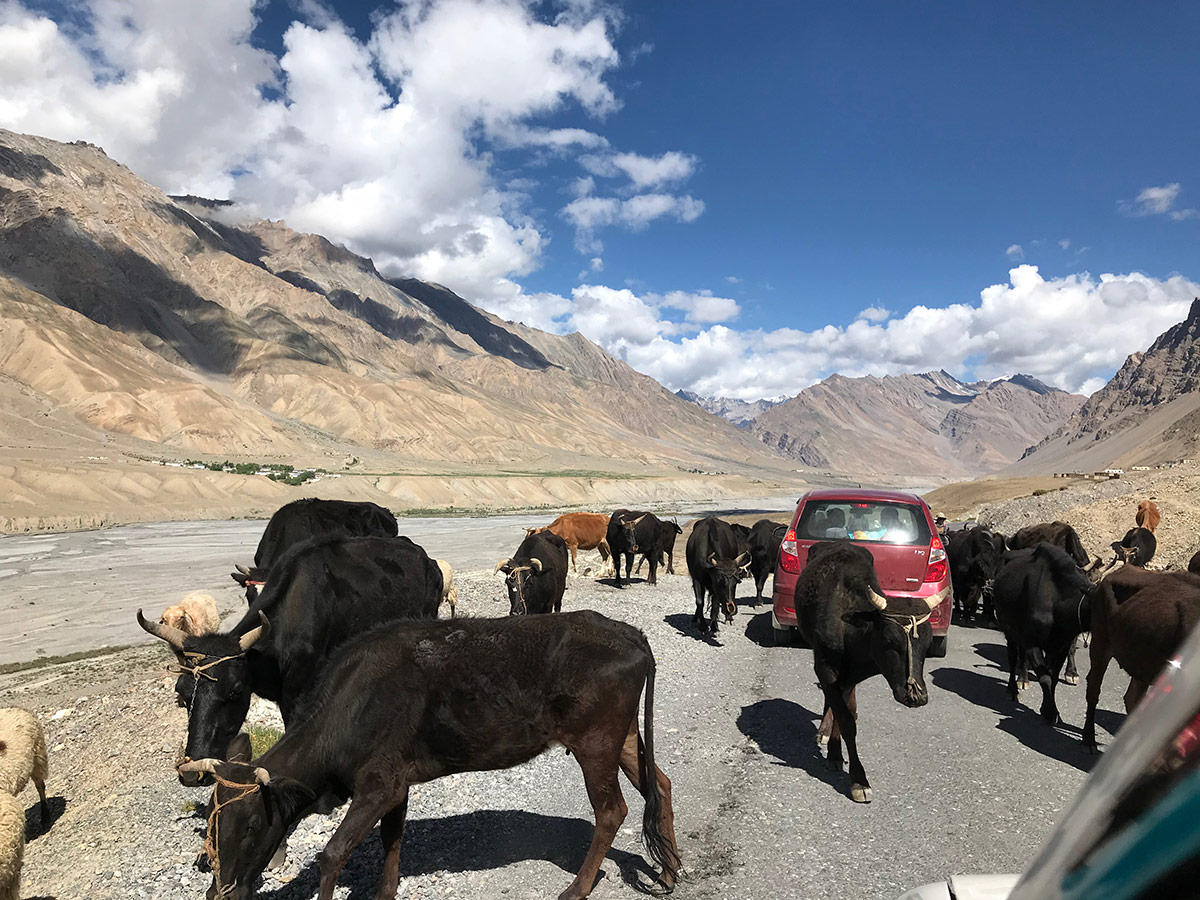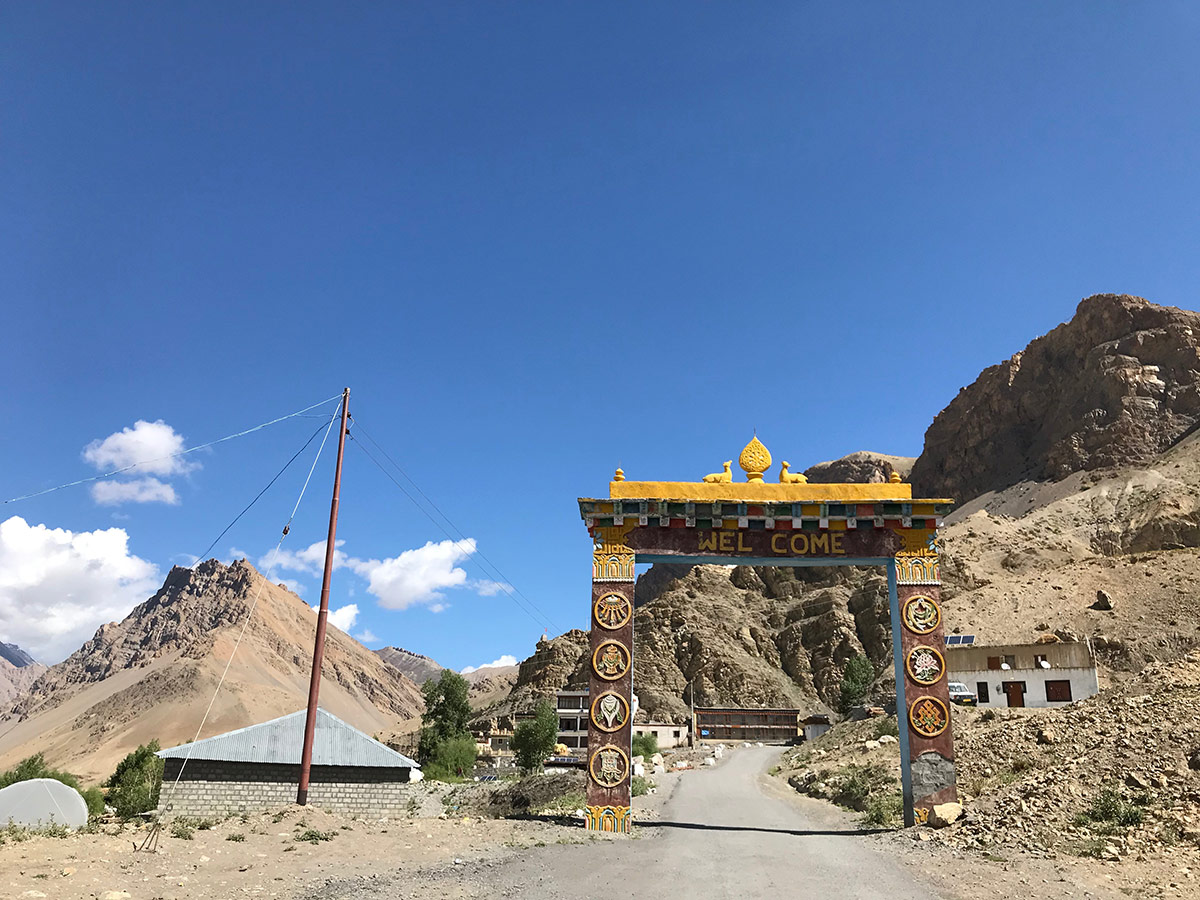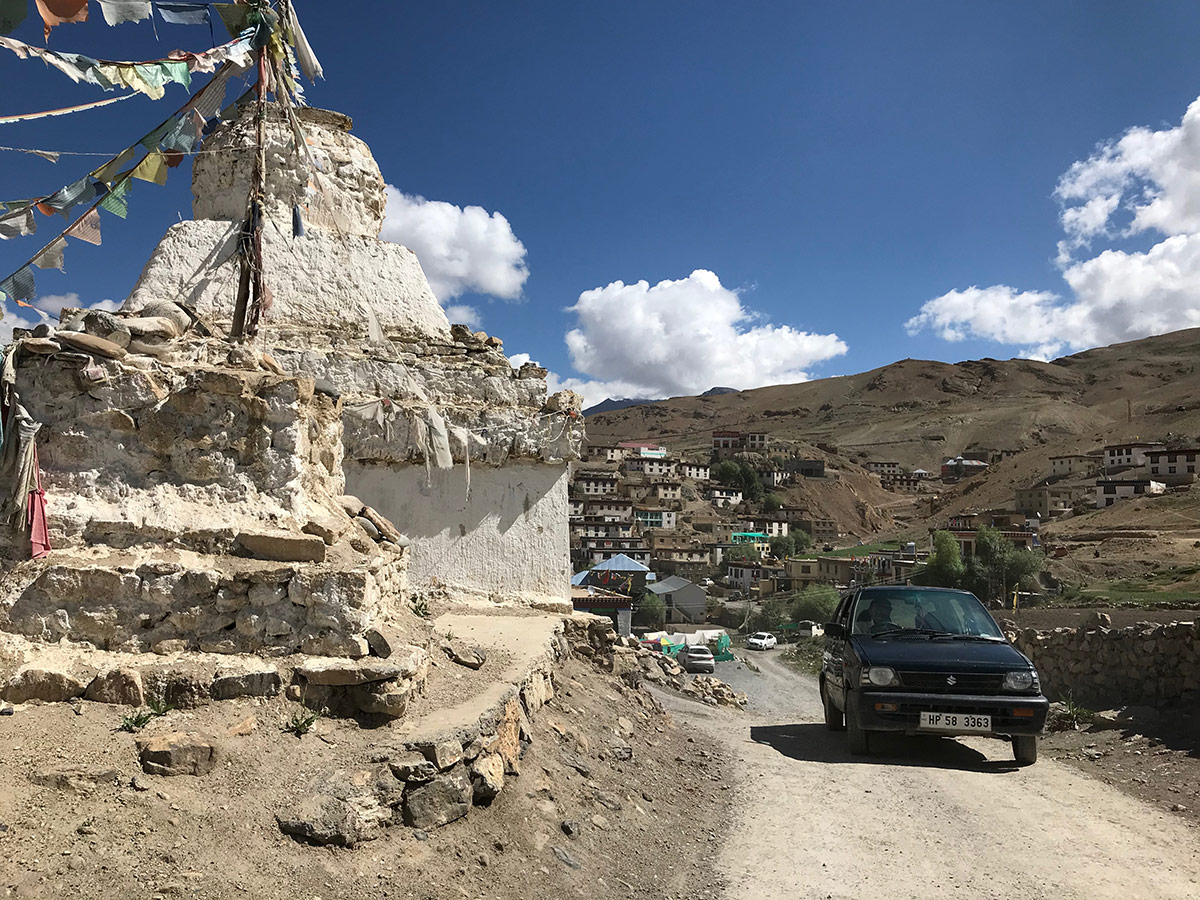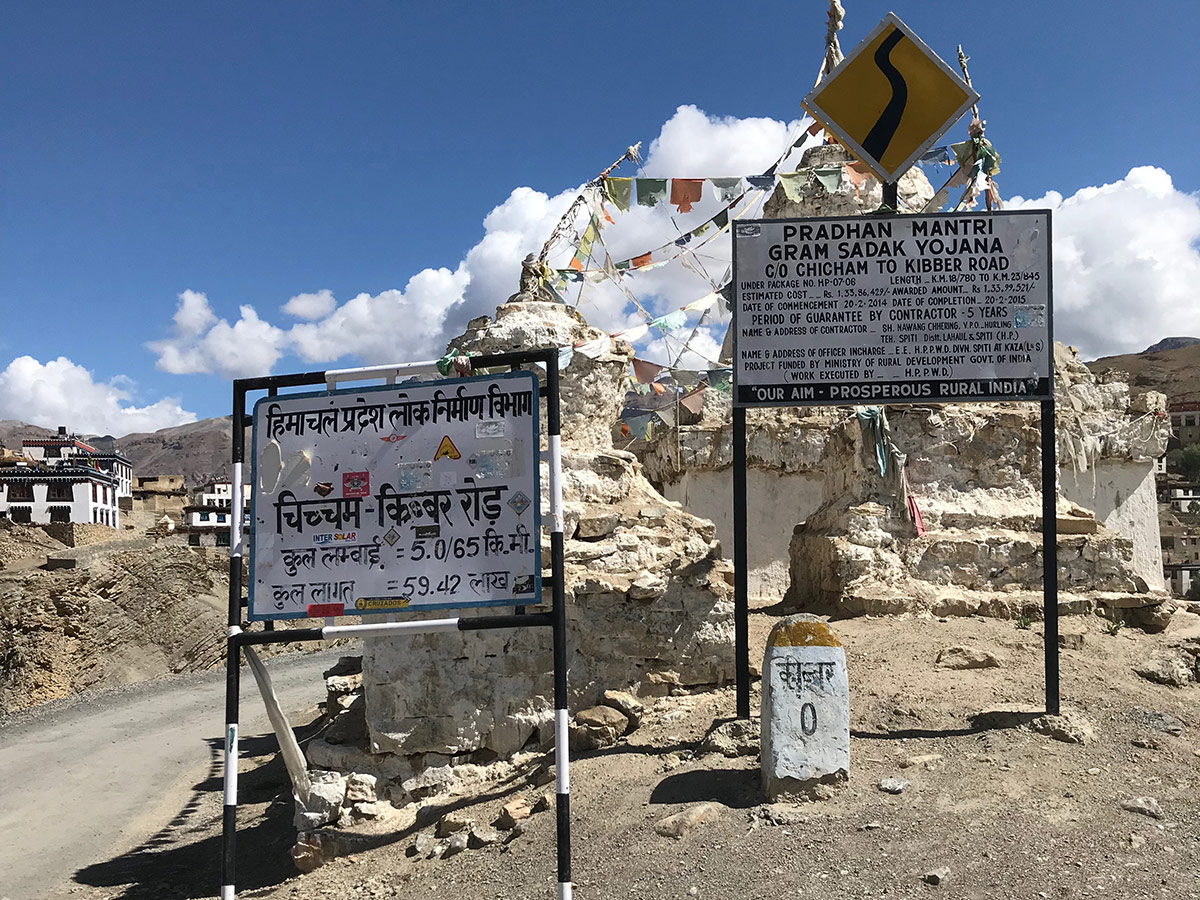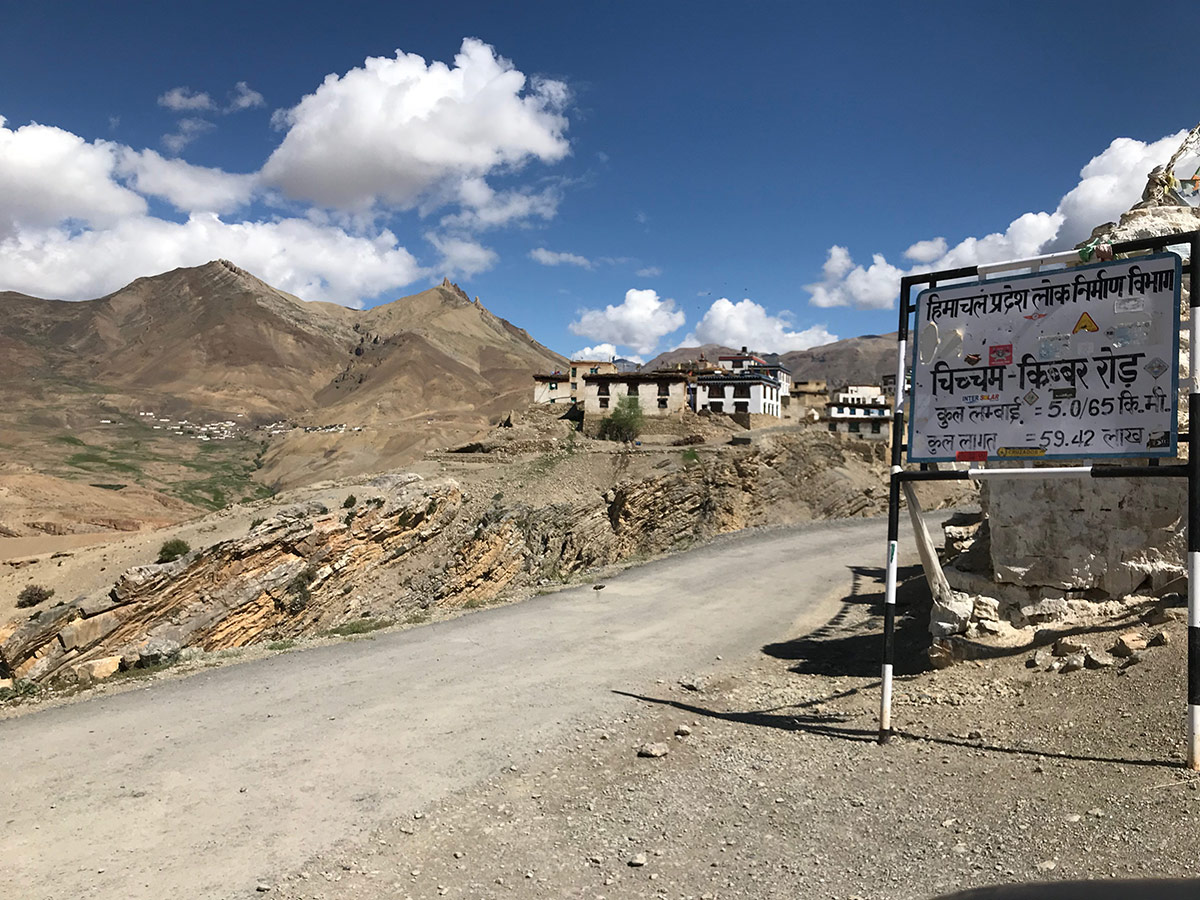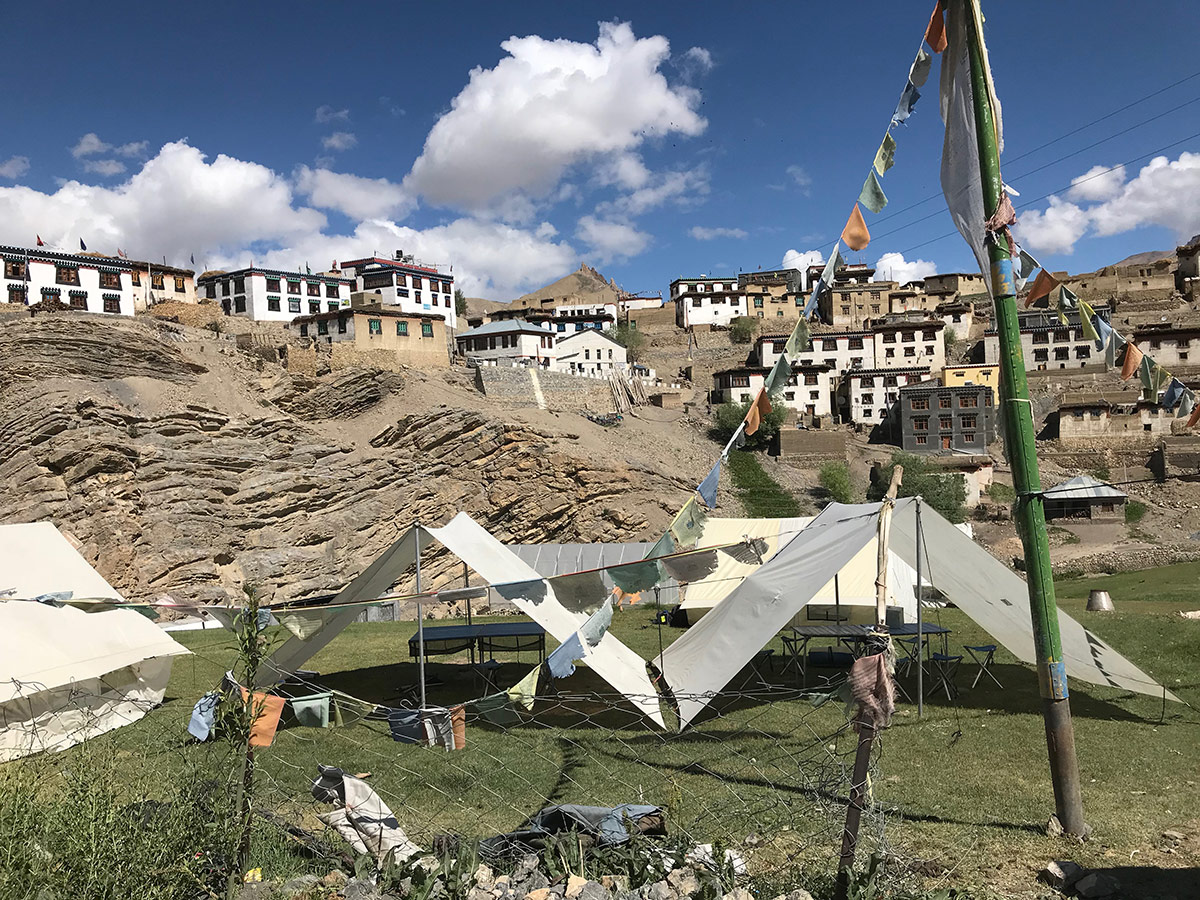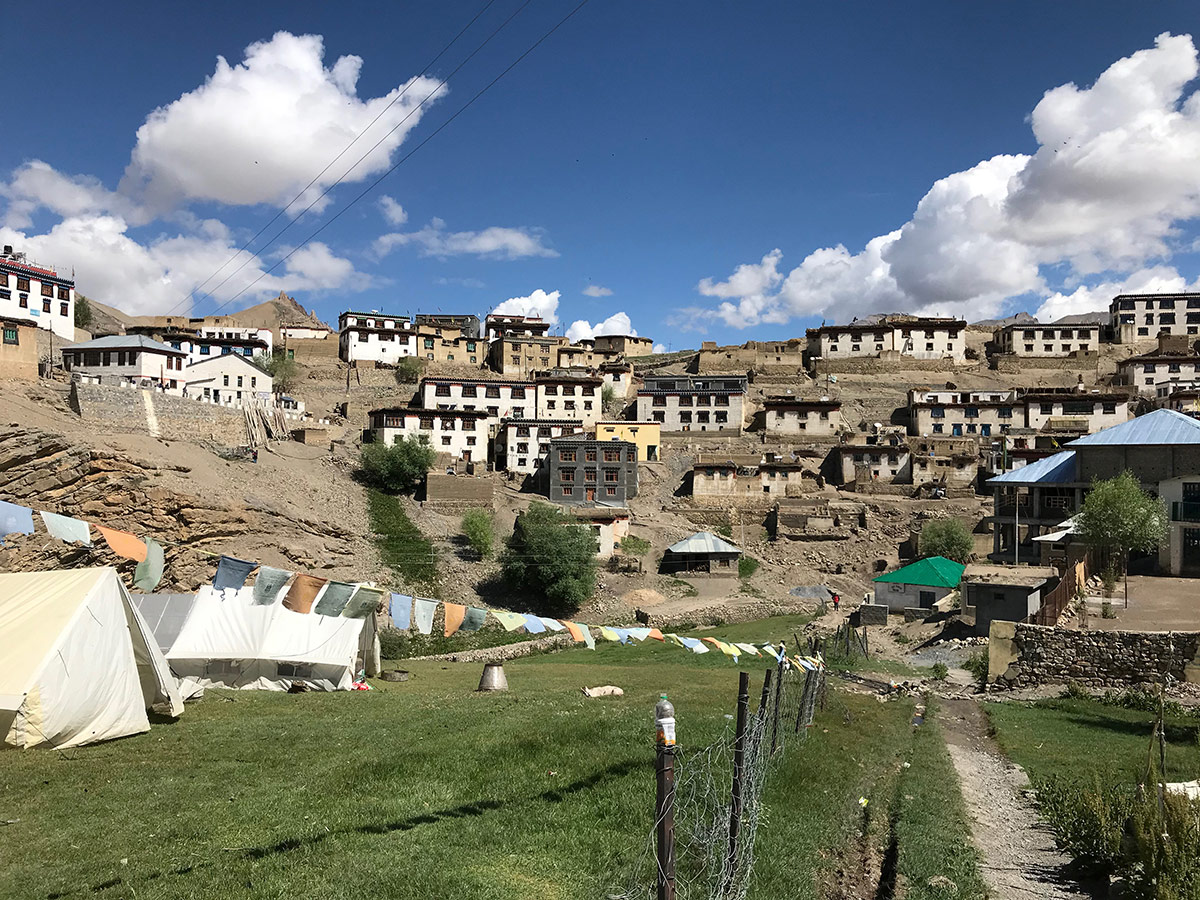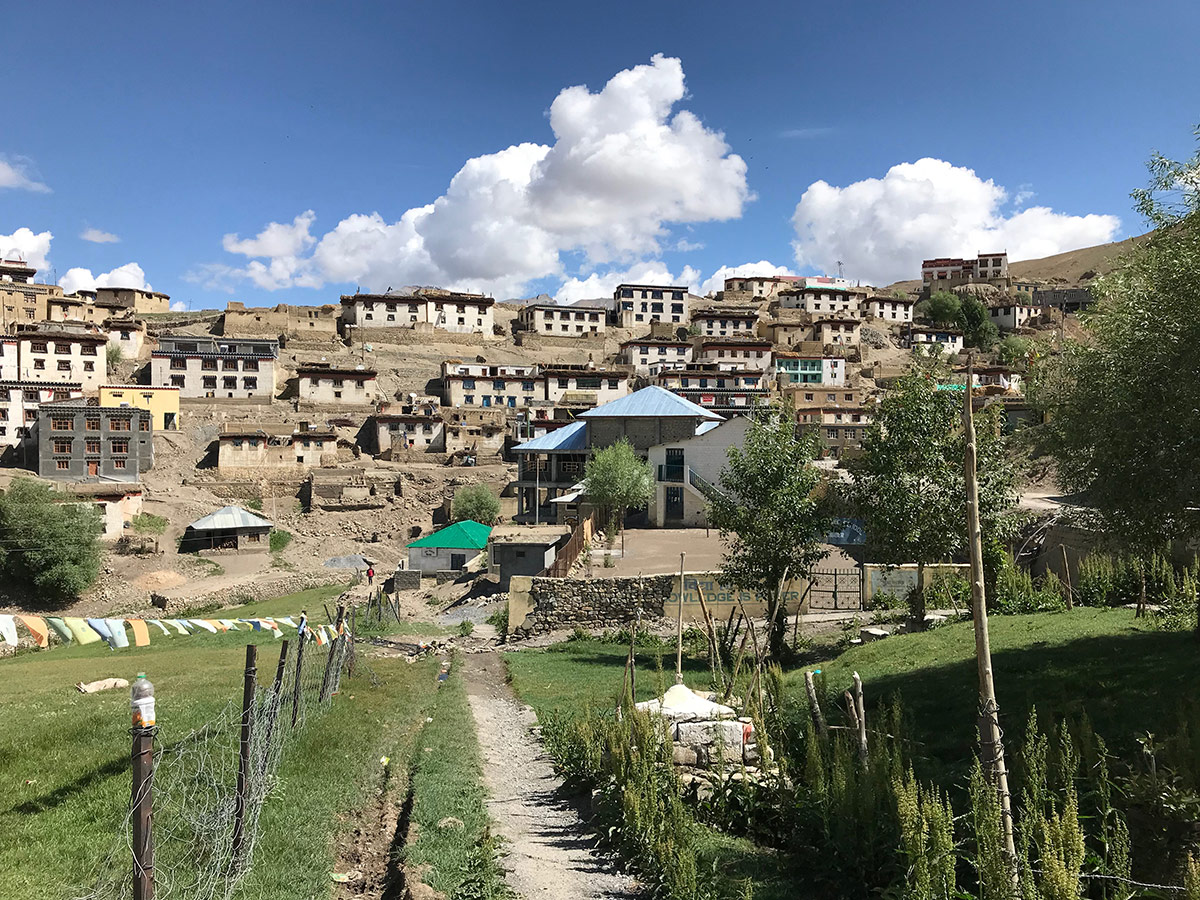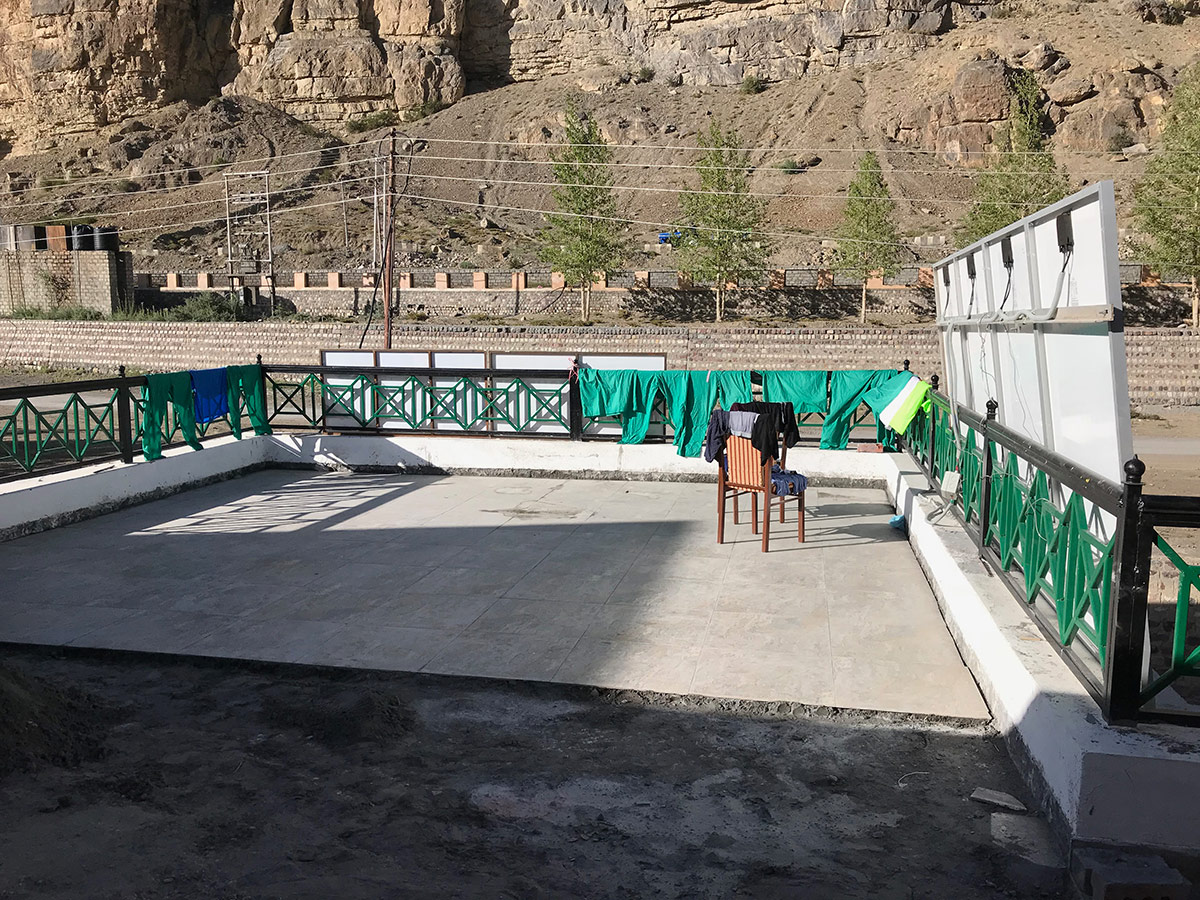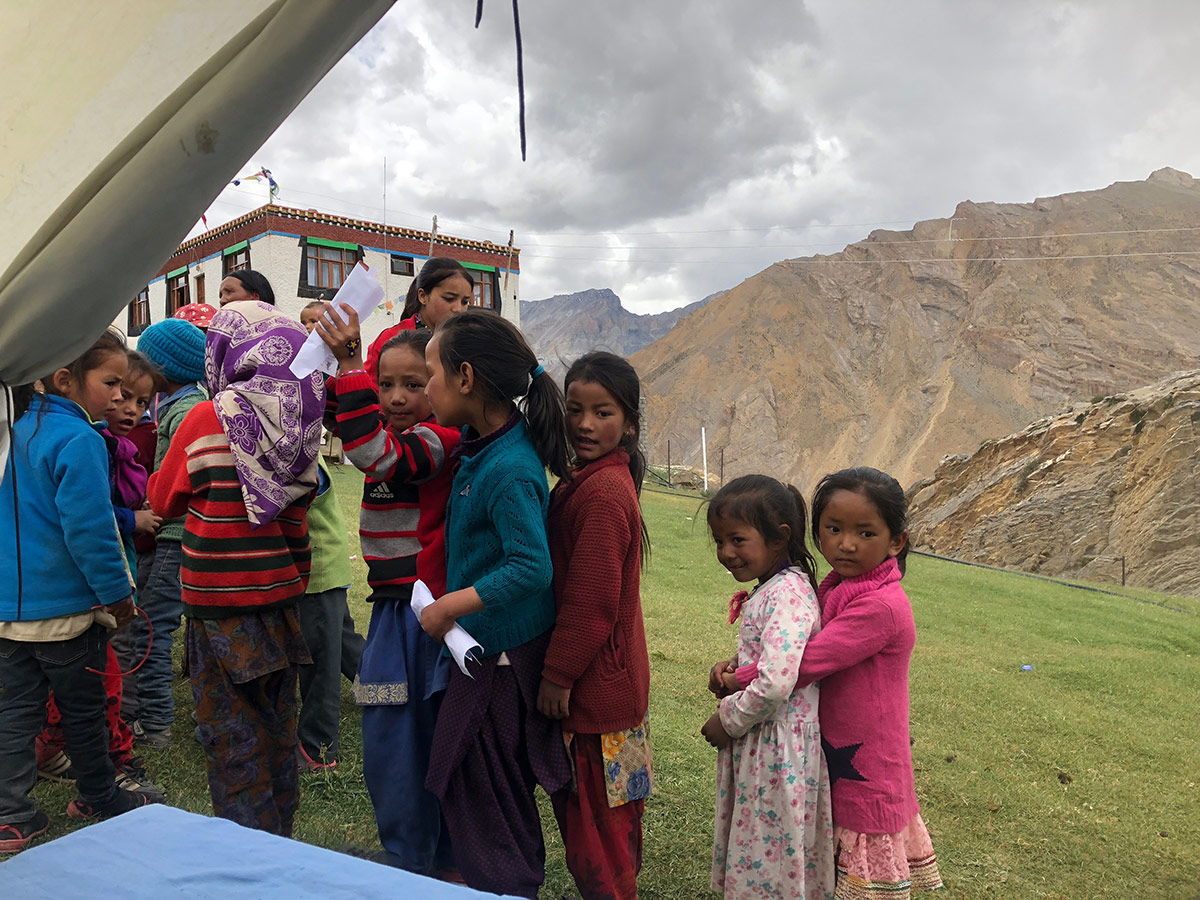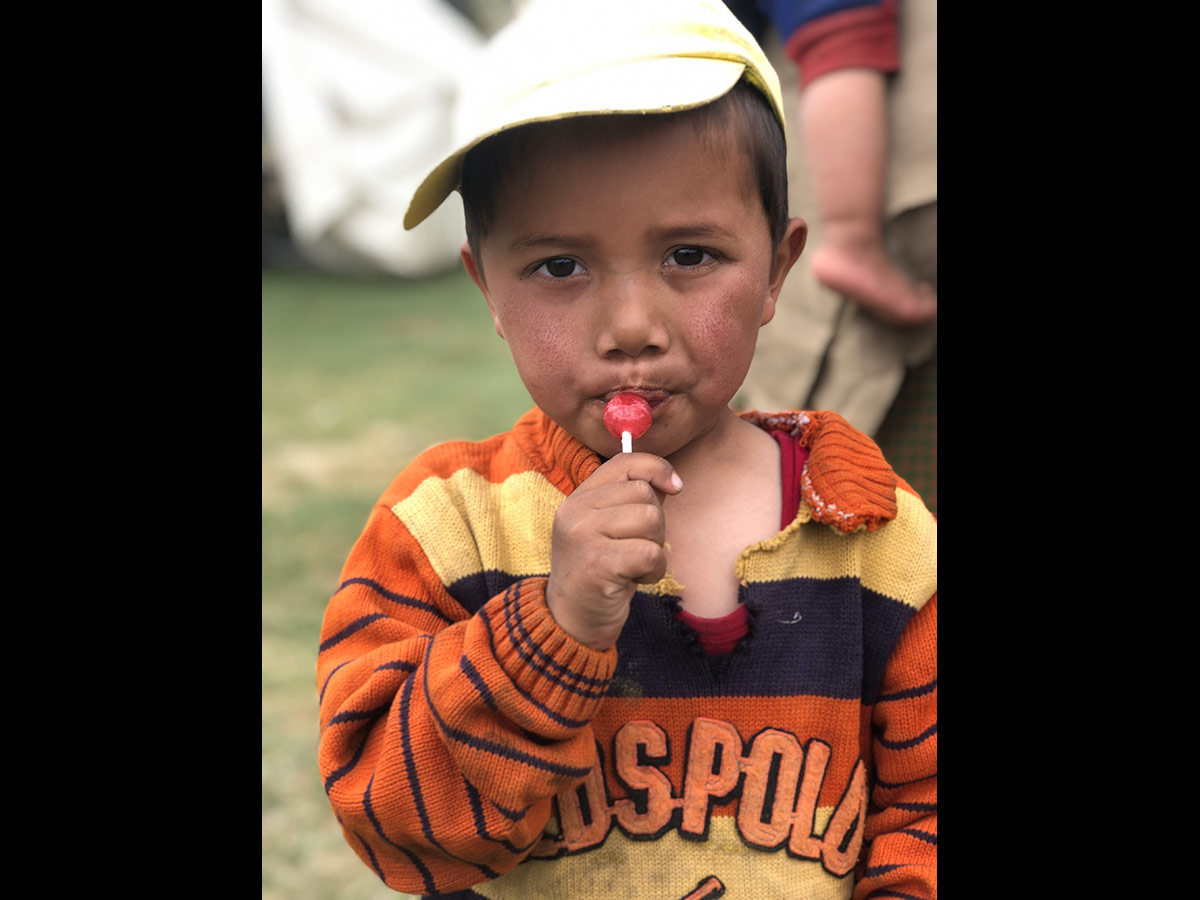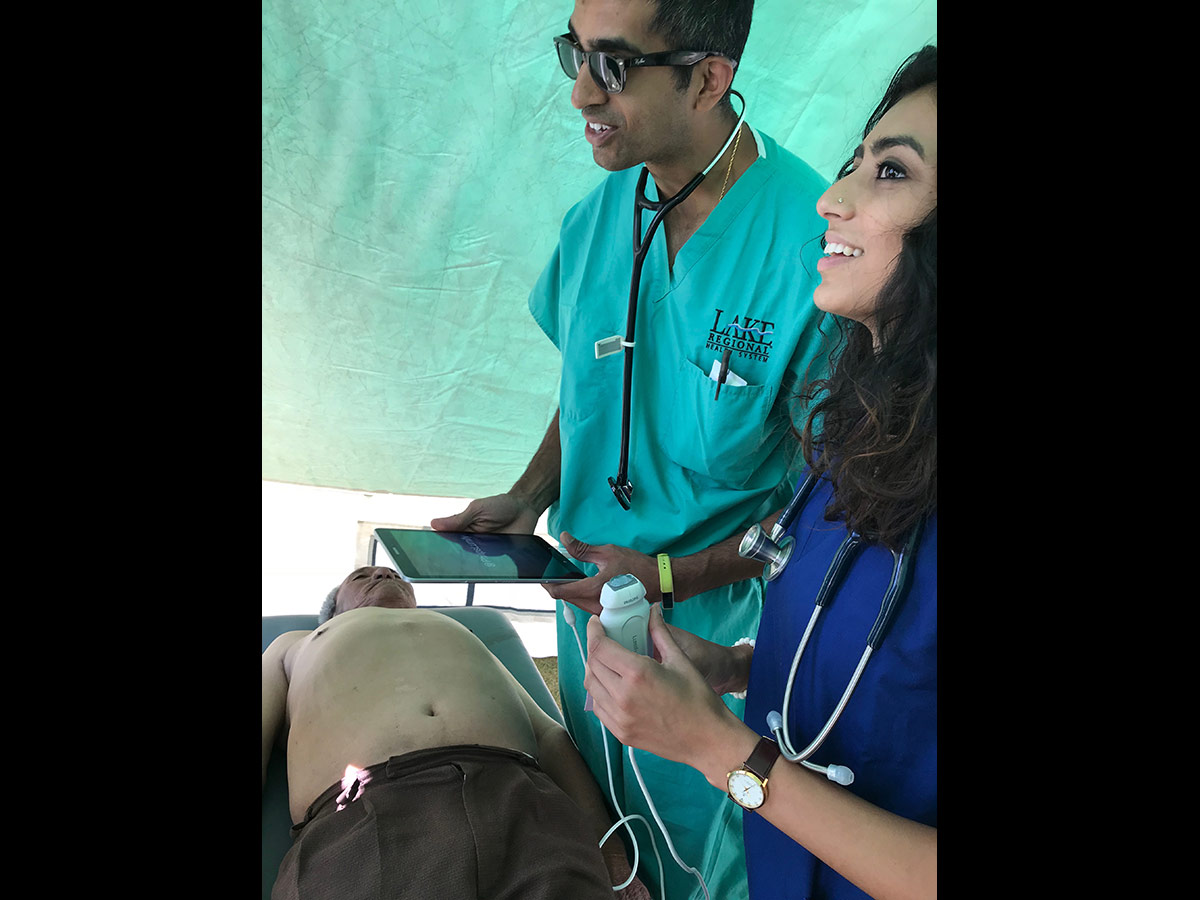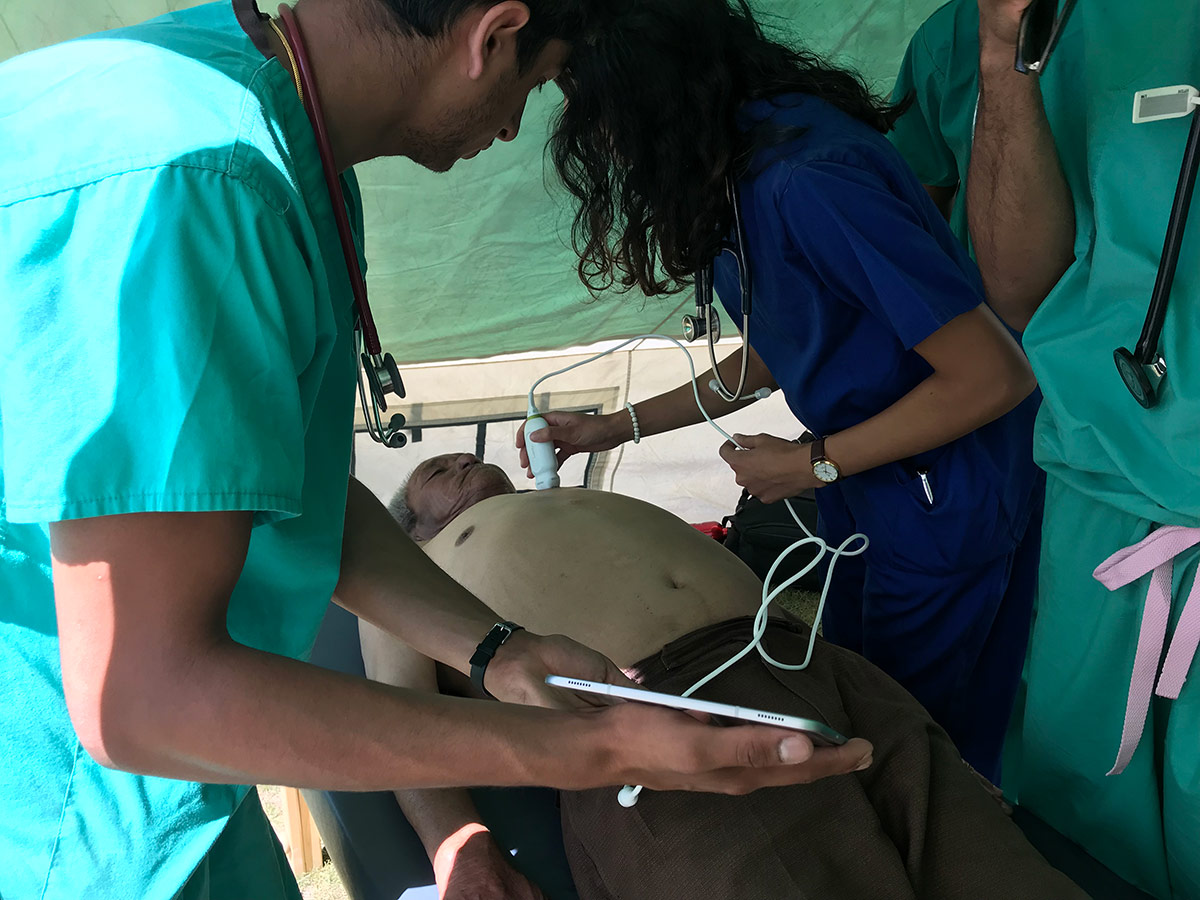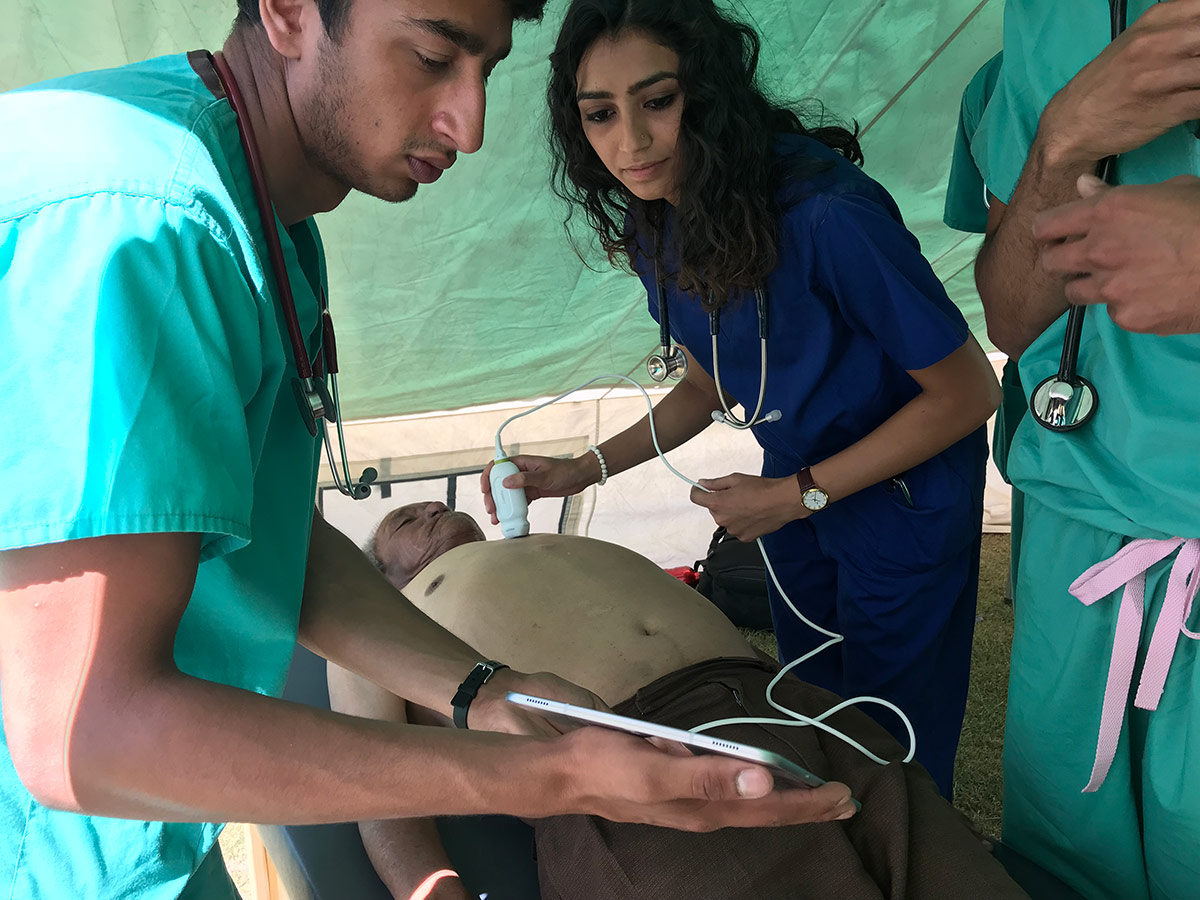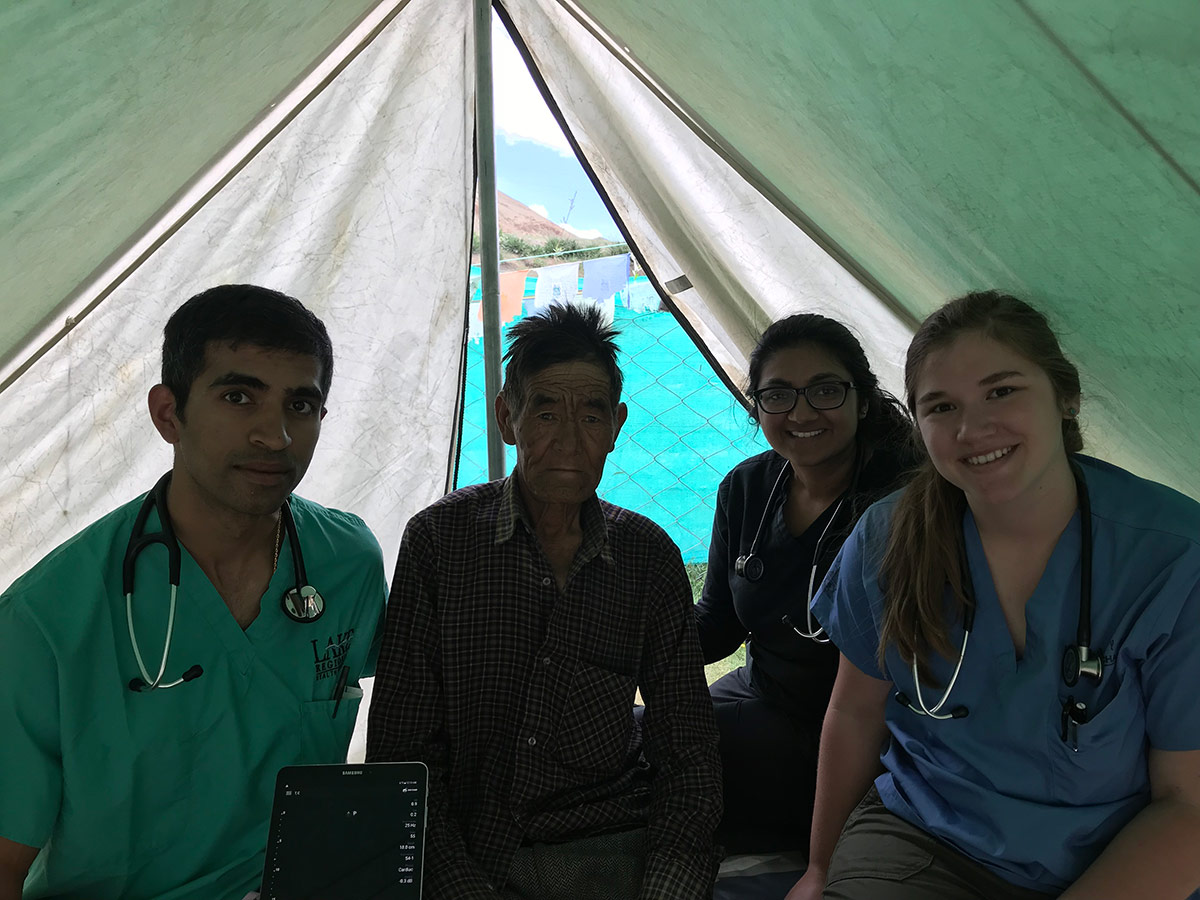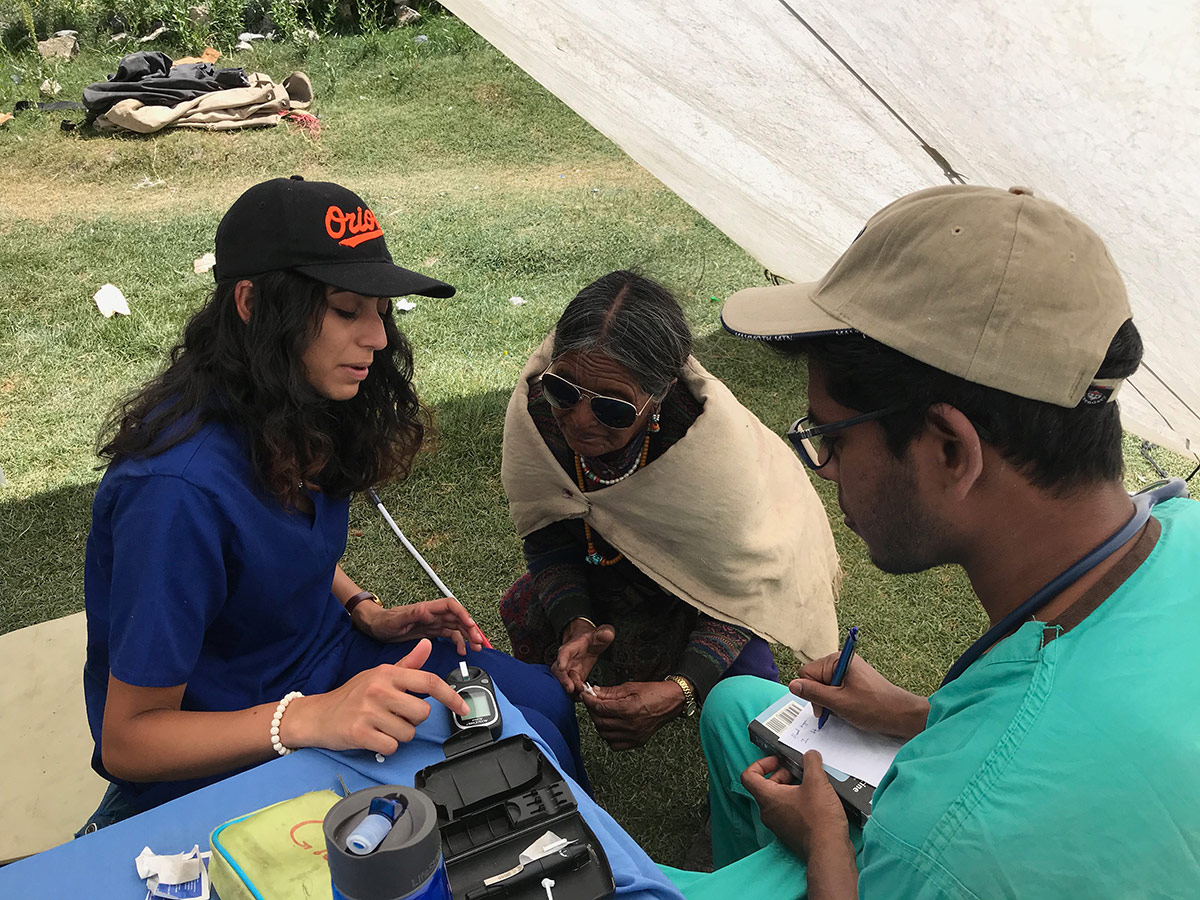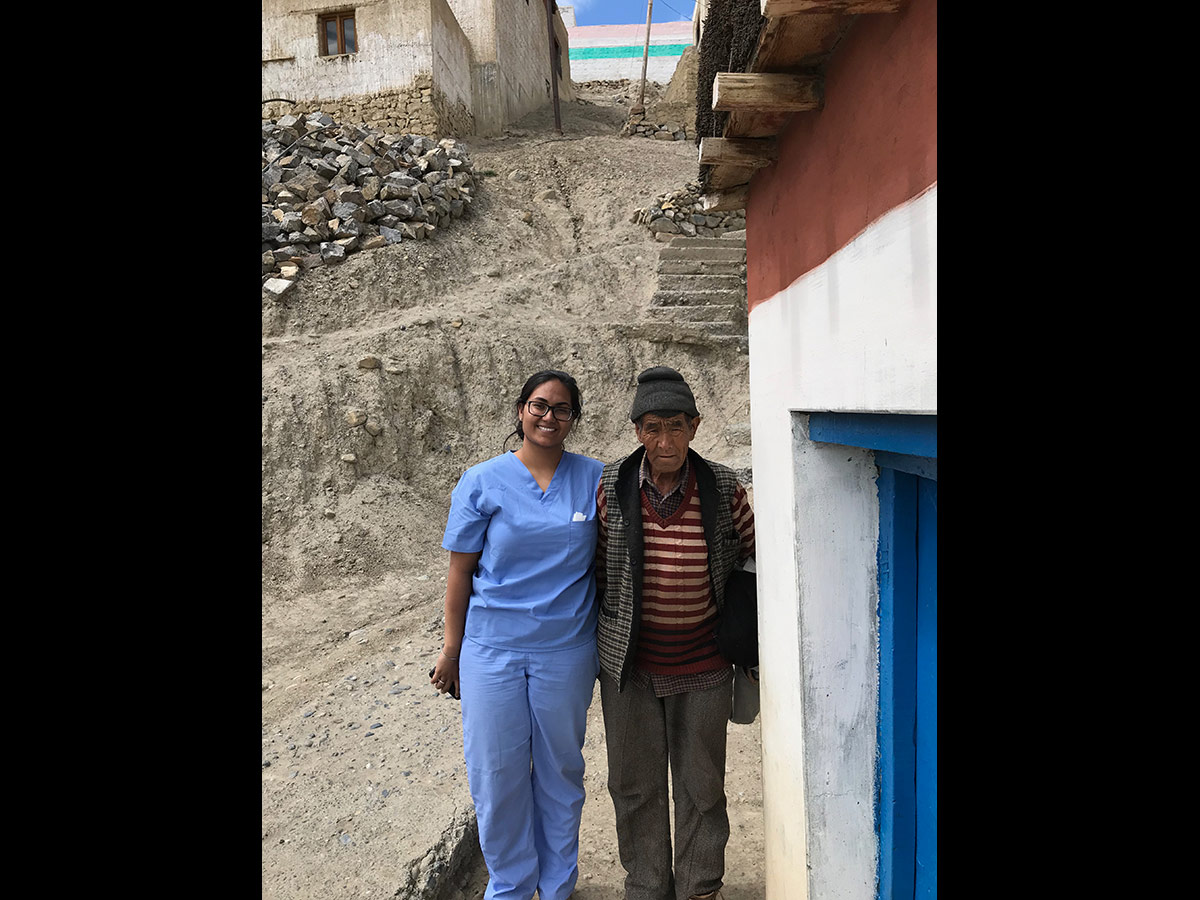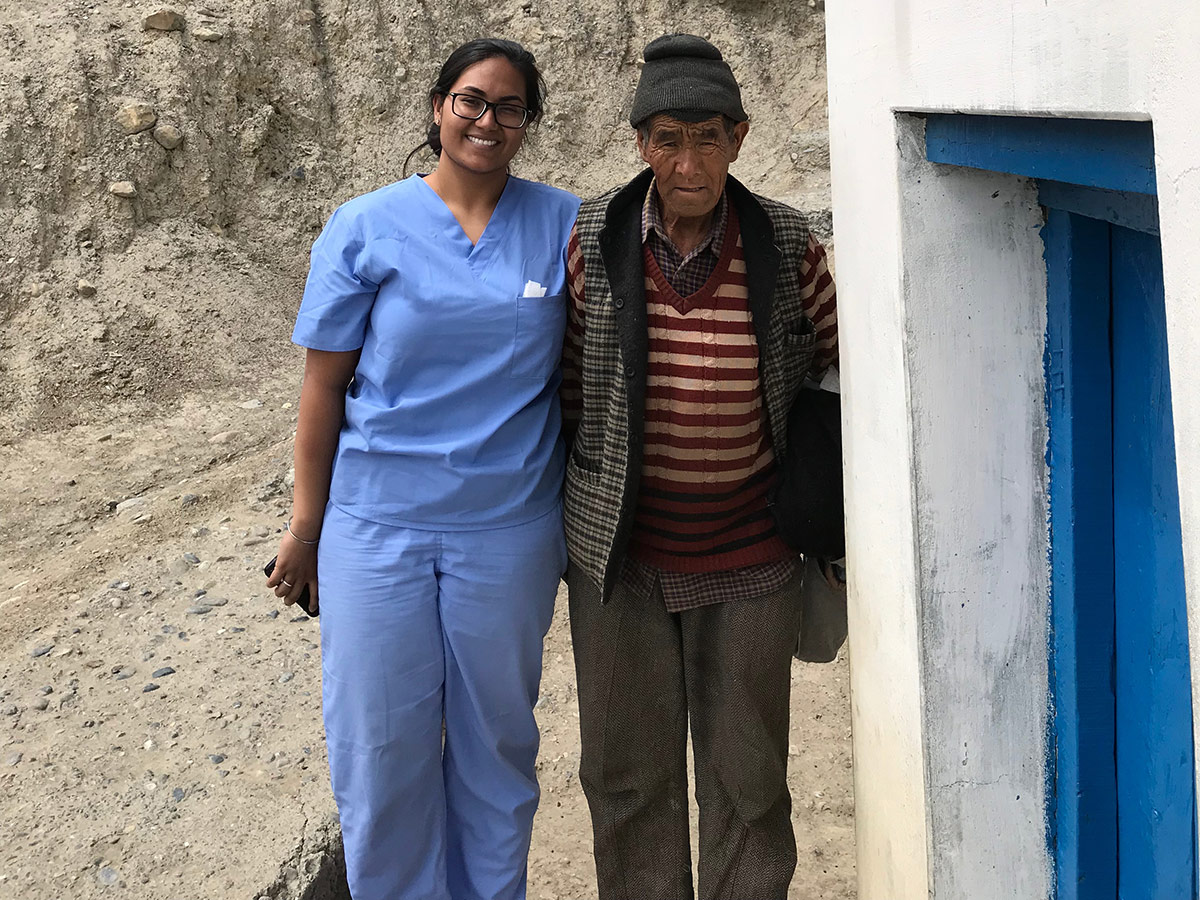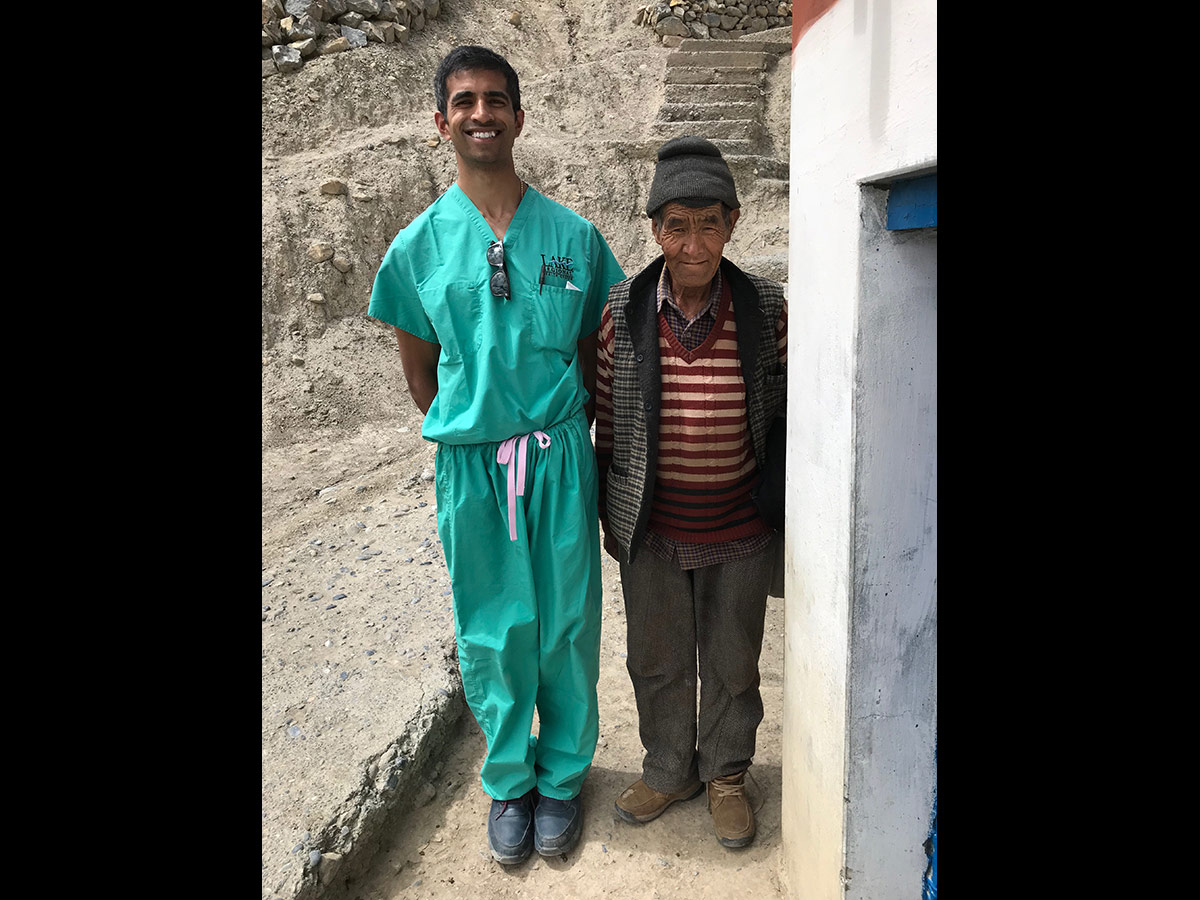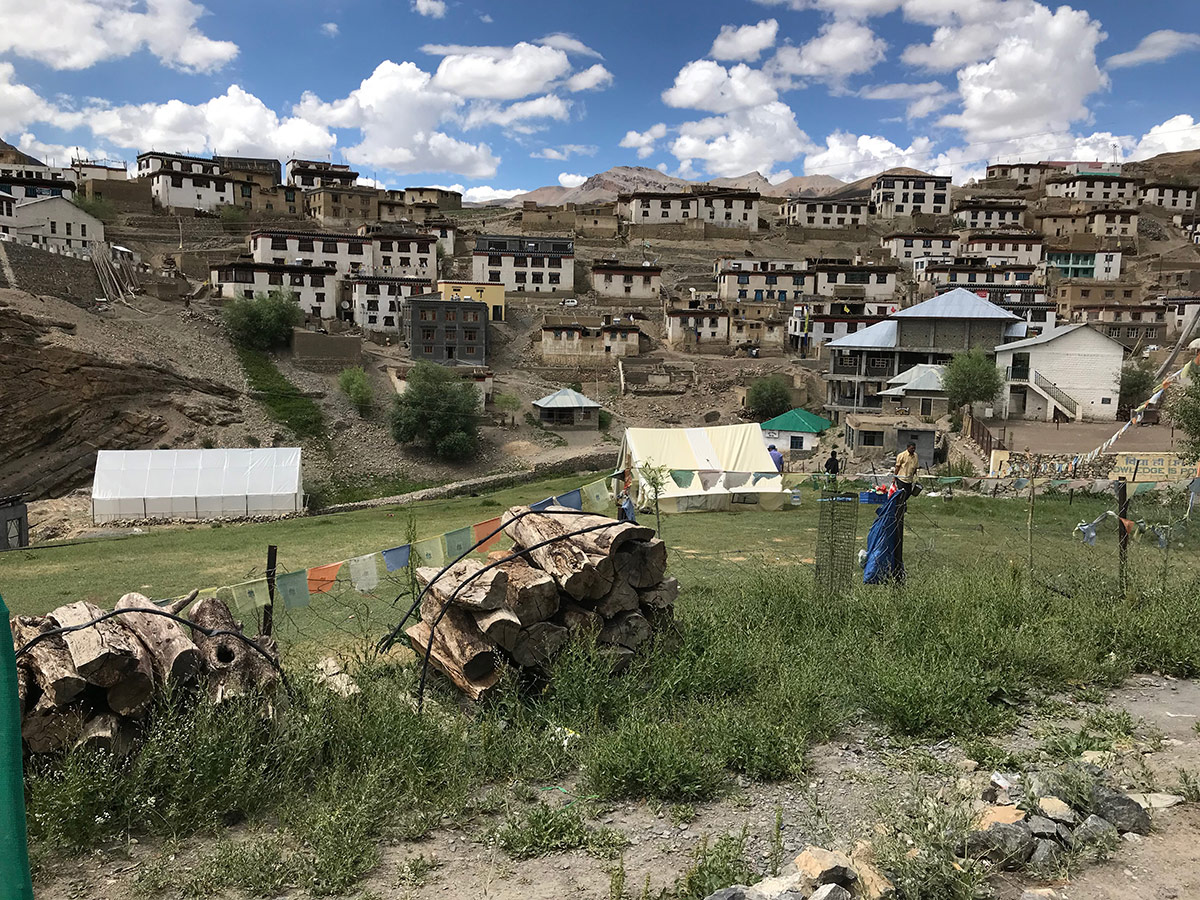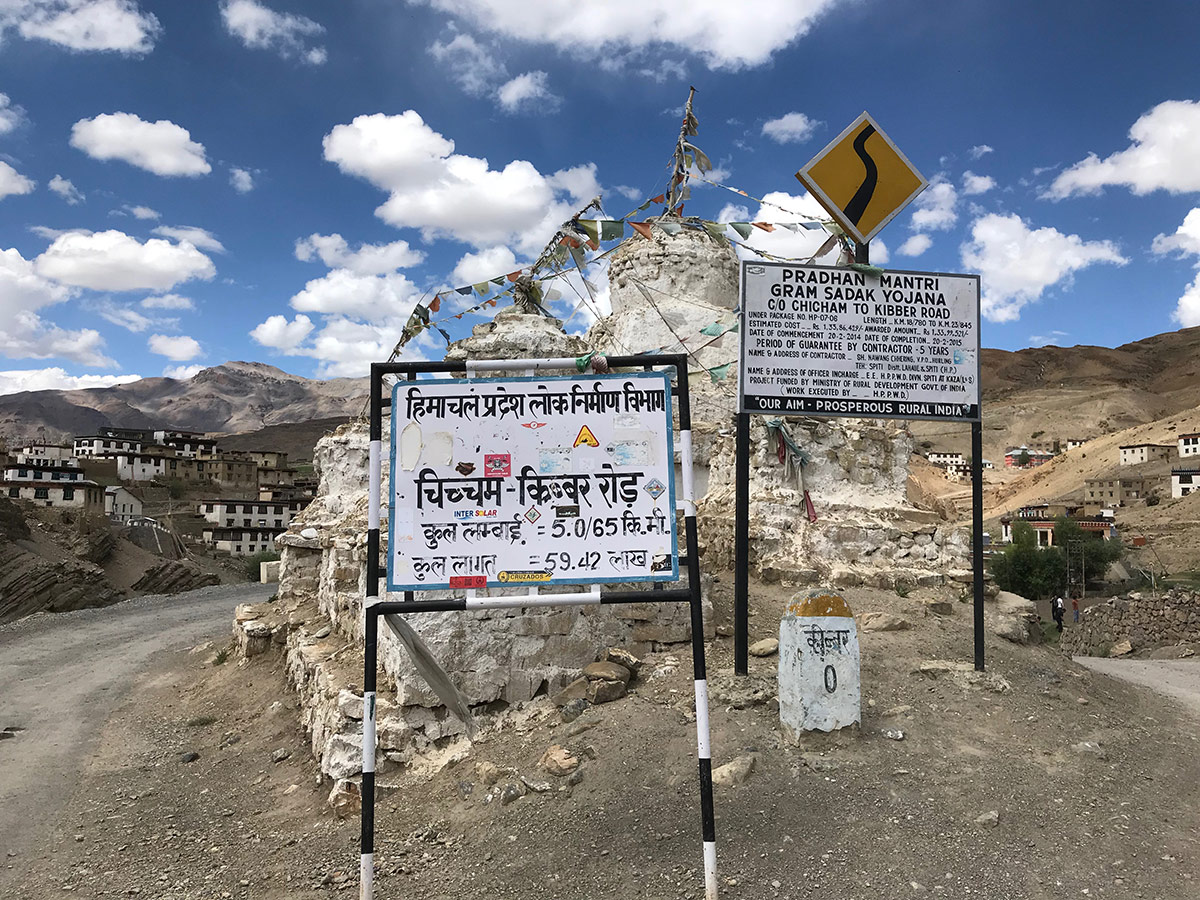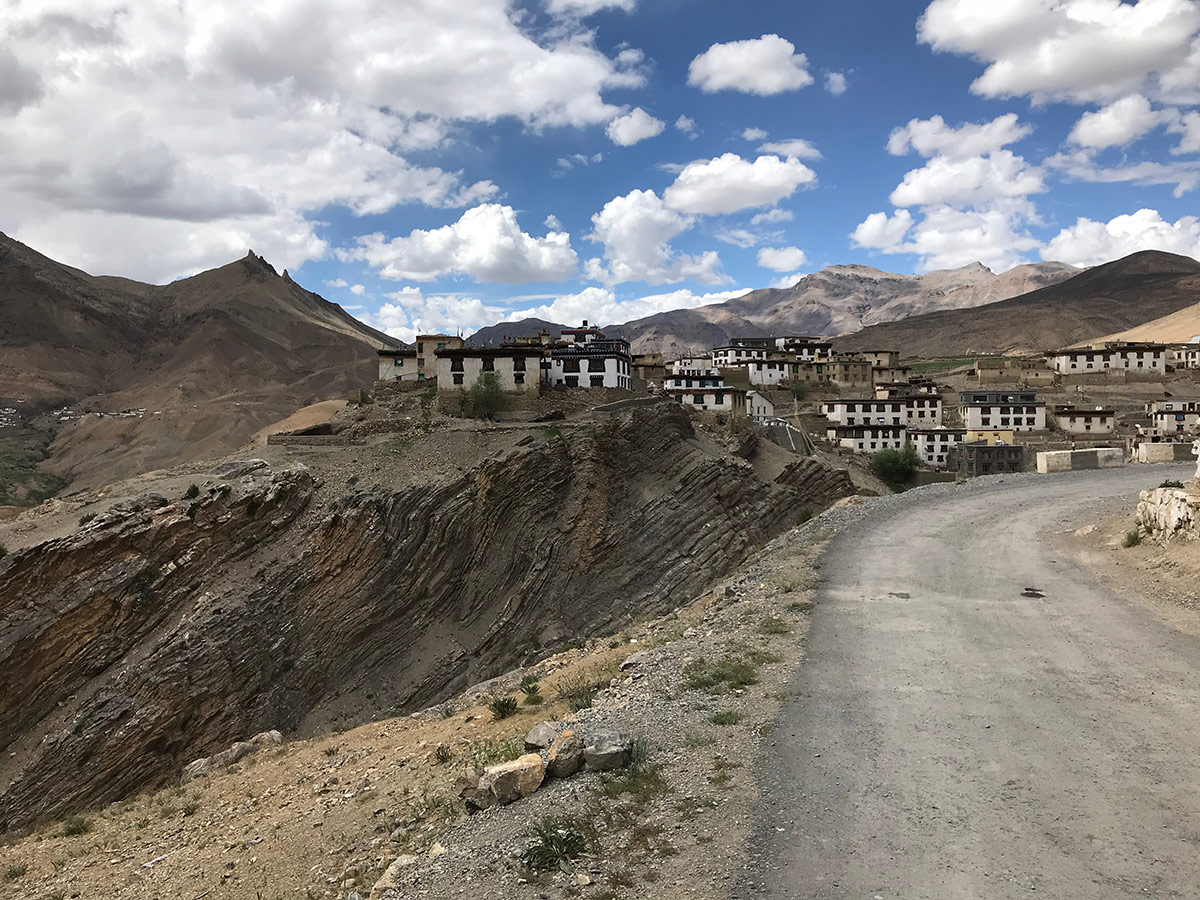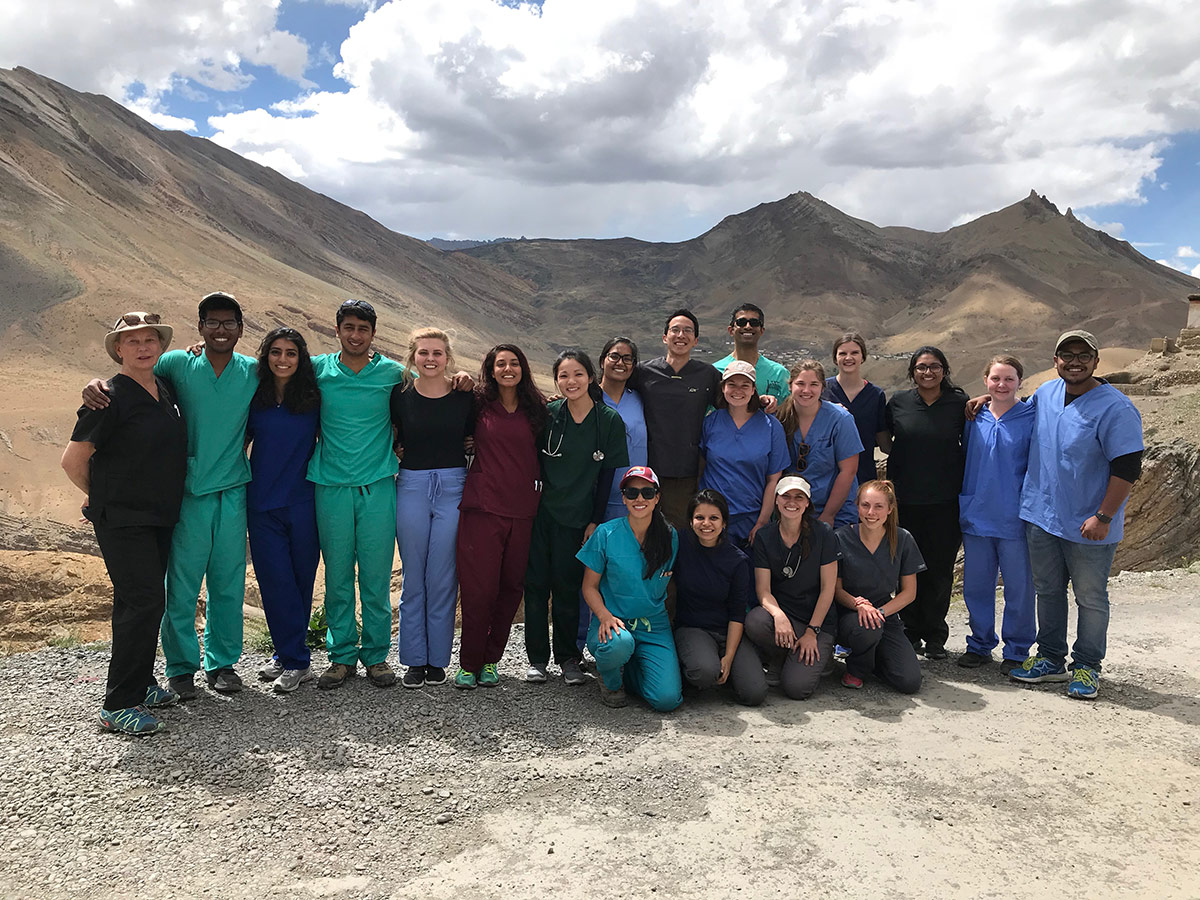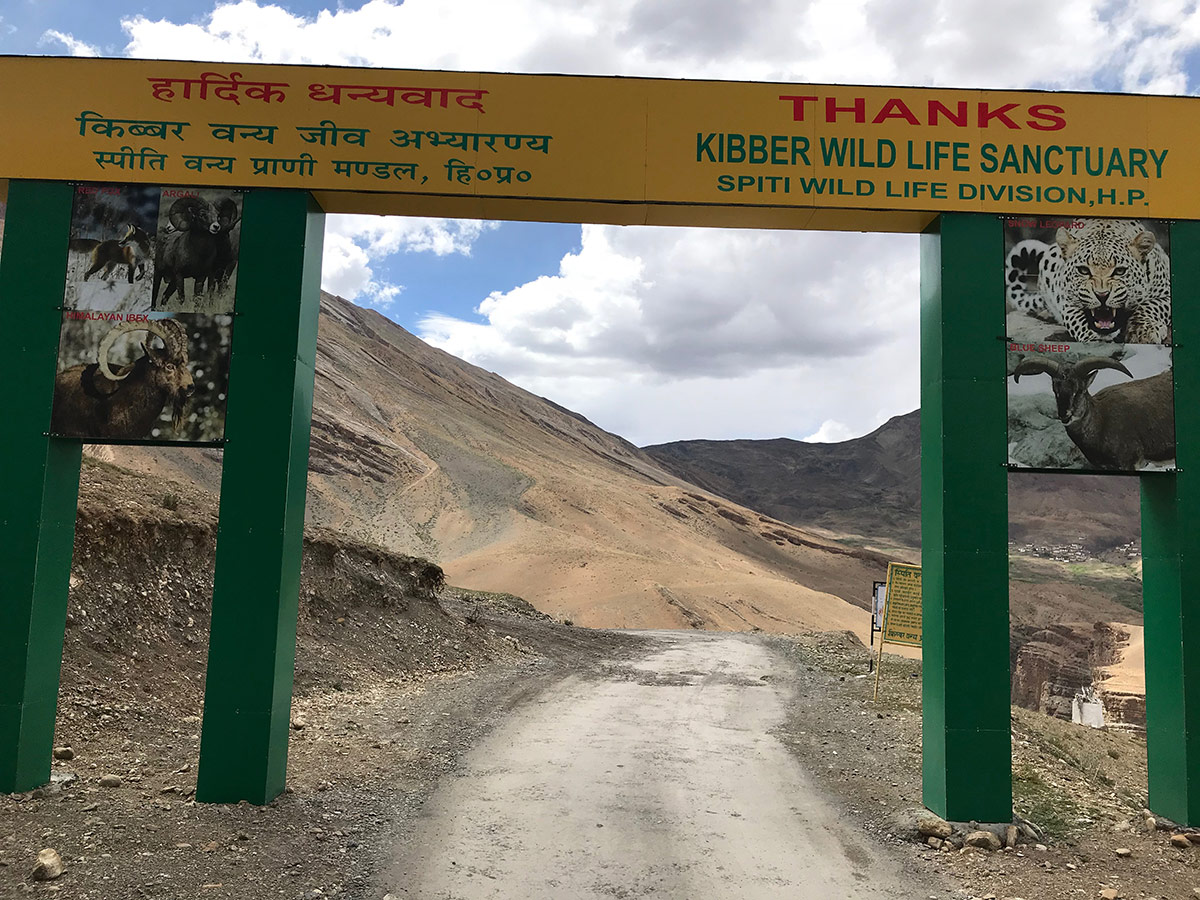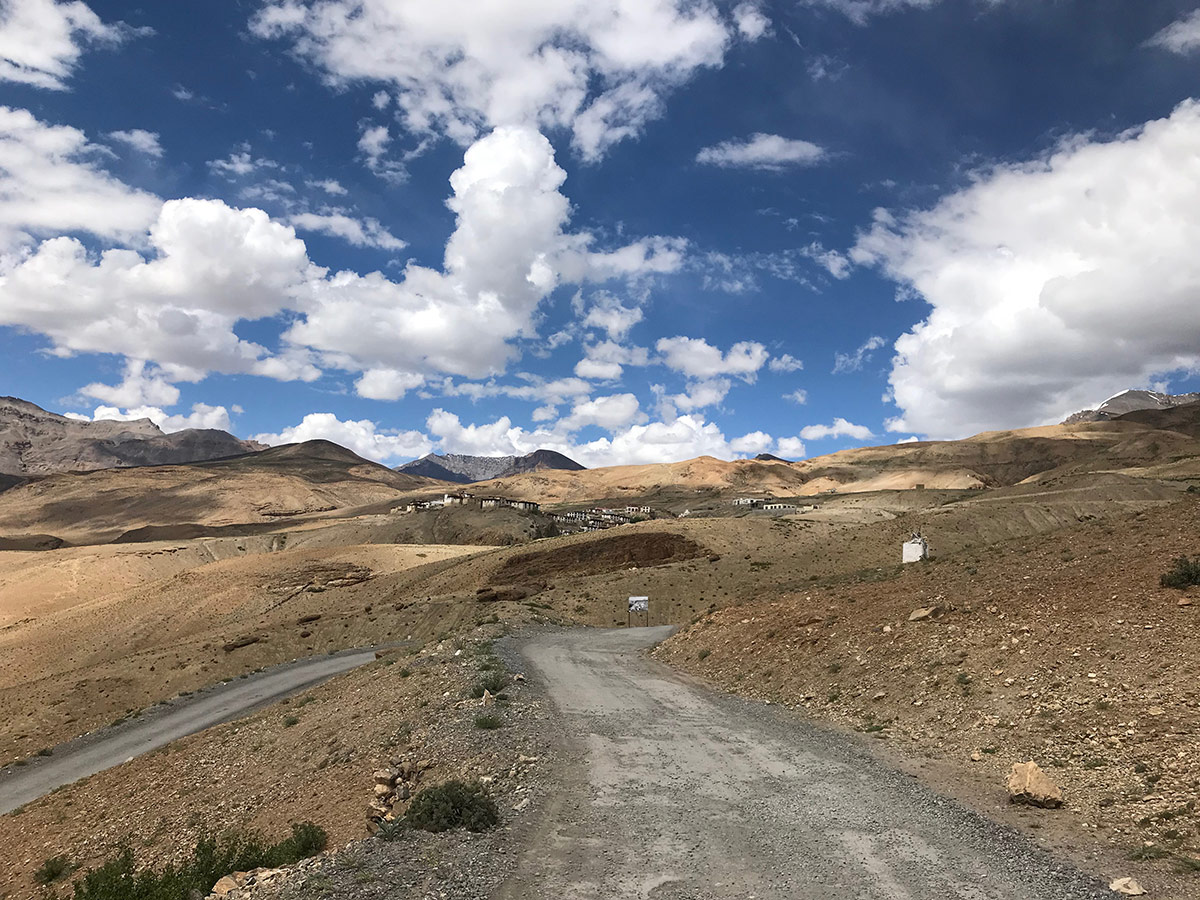A Snapshot of Our Work
Patient count: 98
Echo count: 3
Ultrasound count: 2
Lab (iStat) count: 3
Clinic altitude: 13,795 feet
This morning brought with it an hour-long drive just to traverse the 30 kilometers to Kibber over many one-lane dirt roads winding through the high peaks characteristic of the Spiti River Valley portion of Himachal Pradesh state in Northern India. Kibber is the former home of the world’s highest altitude human settlement, located at 13,000 feet. Below you will find photos from the drive there.
I’ll share with you a poignant patient story from today that I will carry with me for a long time to come and I know impacted several of my students.
Our patient was Mr. CT, a 72-year-old gentleman who has lived in Kibber all his life. Like many of our patients, he came into our clinic with a lot of general complaints, stomach pains, vision problems, shortness of breath and blood pressure questions. However, from the instant I laid eyes on him, I knew that he was different.
I told my medical student that the thing that concerned me the most of his sundry problem list was his shortness of breath. I noticed that he was cachectic and had a fatigue about him.
We started talking to him about his shortness of breath and he mentioned that it had started a few months back but didn’t bother him too much. He was much more excited to talk about his stomach problems. However, I noticed that his blood pressure was 210/90 mmHg, so we rechecked it and obtained a similar result.
A physician last year had given him a blood pressure medication and told him to come back in a few months. Our student talked to him about his life and he started opening up to her in a way that most patients from this region don’t. He told her that he was the village “keeper” and that he had lived a full life and made an honest living and was proud of that.
At this point I started examining him with an eye towards severe aortic insufficiency. Unfortunately, I found severe aortic insufficiency along with severe tricuspid regurgitation on my exam, which was corroborated with a bedside echo (he had a bicuspid aortic valve).
I shared the news with him and his daughter through one of our students who served as an interpreter. I mentioned that he would have to go to Shimla to see a cardiologist and a heart surgeon for a possible replacement of the tricuspid/aortic valve.
He had already developed hepatomegaly and swelling in his legs: both signs that his disease was progressing past the early stages. However, his heart function was still preserved so I knew it was not too late.
One of our students sat with him for an hour after the visit, because we had another 50 patients to see, and started speaking with him in Hindi. They both became very emotional and I was touched so deeply by this moment.
When we tell patients they need to go to the hospital urgently, they often don’t heed the urgency of this advice and say that they will go in the winter, which makes no sense to me as many of the roads out of town are closed due to snow and ice in the mountains during the winter time.
Our patient asked us to come to his house for some tea. We agreed to walk him home, but told him we would not have time for tea. He had to stop several times while walking up hill as he was very short of breath, but we made it to his door and he was extremely magnanimous. I’ve never seen a patient form a bond so quickly with our team as Mr. CT did with our student, either during my previous trip or this one.
I don’t know what will happen to Mr. CT, but I hope he will get the care he needs so he can have a long life ahead of him.
We drove back home through the Kibber Wildlife Sanctuary, which houses a number of interesting creatures including the ibex and the famed snow leopard. We saw some ibex but no snow leopards.
Afterward, we headed back to the guest house and I got to do some laundry with a bucket and hang it out to dry. We closed out the day with two lectures and a great dinner.

